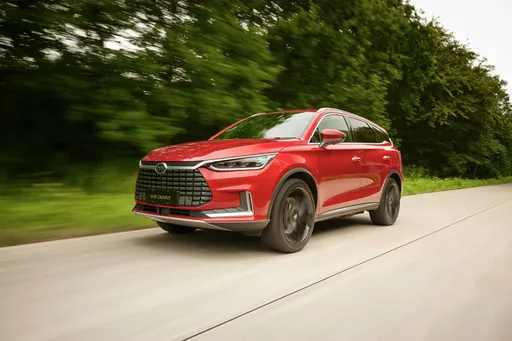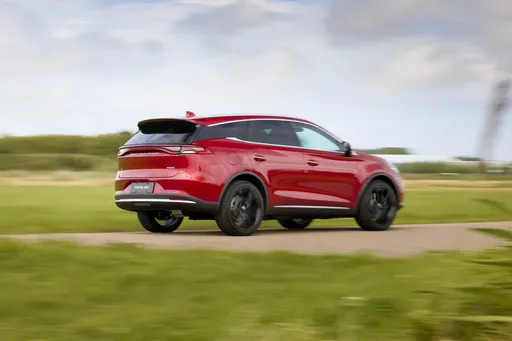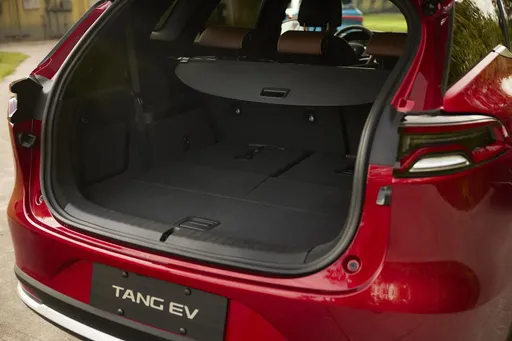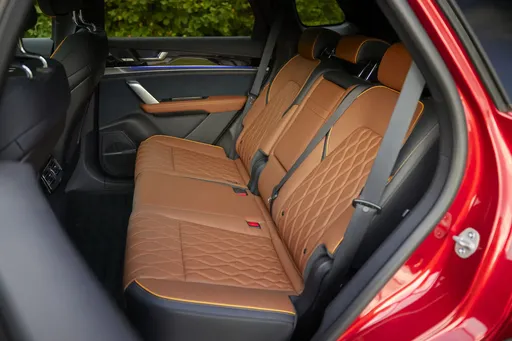BYD Tang vs SERES 5 – Which car suits you better?
Both models have their strengths – but which one suits you more?
Compare performance, efficiency, price and space directly: BYD Tang or SERES 5?
Costs and Efficiency:
Looking at overall running costs, both models reveal some interesting differences in everyday economy.
SERES 5 has a somewhat advantage in terms of price – it starts at 57300 £, while the BYD Tang costs 64300 £. That’s a price difference of around 6943 £.
In terms of energy consumption, the advantage goes to the SERES 5: with 18.60 kWh per 100 km, it’s distinct more efficient than the BYD Tang with 24 kWh. That’s a difference of about 5.40 kWh.
As for range, the BYD Tang performs slightly better – achieving up to 530 km, about 100 km more than the SERES 5.
Engine and Performance:
Under the bonnet, it becomes clear which model is tuned for sportiness and which one takes the lead when you hit the accelerator.
When it comes to engine power, the SERES 5 has a somewhat edge – offering 585 HP compared to 517 HP. That’s roughly 68 HP more horsepower.
In acceleration from 0 to 100 km/h, the SERES 5 is somewhat quicker – completing the sprint in 4.10 s, while the BYD Tang takes 4.90 s. That’s about 0.80 s faster.
In terms of top speed, the SERES 5 performs hardly perceptible better – reaching 200 km/h, while the BYD Tang tops out at 190 km/h. The difference is around 10 km/h.
There’s also a difference in torque: SERES 5 pulls distinct stronger with 940 Nm compared to 680 Nm. That’s about 260 Nm difference.
Space and Everyday Use:
Whether family car or daily driver – which one offers more room, flexibility and comfort?
Seats: BYD Tang offers evident more seating capacity – 7 vs 5.
In curb weight, SERES 5 is slightly lighter – 2360 kg compared to 2630 kg. The difference is around 270 kg.
In terms of boot space, the SERES 5 offers clearly perceptible more room – 367 L compared to 235 L. That’s a difference of about 132 L.
In maximum load capacity, the BYD Tang performs significantly better – up to 1655 L, which is about 932 L more than the SERES 5.
When it comes to payload, BYD Tang distinct takes the win – 575 kg compared to 375 kg. That’s a difference of about 200 kg.
Who wins the race?
The SERES 5 proves to be shows small but notable strengths and therefore becomes our DriveDuel Champion!
SERES 5 is the better all-rounder in this comparison.
SERES 5
BYD Tang
The BYD Tang represents a bold entry into the competitive SUV market, blending cutting-edge technology with modern design aesthetics. Its spacious interior is complemented by high-quality materials and innovative features, making it a strong contender for families and tech enthusiasts alike. With an emphasis on sustainability, the Tang offers an eco-friendly driving experience without compromising on performance or luxury.
details @ press.bydauto.be
@ press.bydauto.be
 @ press.bydauto.be
@ press.bydauto.be
 @ press.bydauto.be
@ press.bydauto.be
 @ press.bydauto.be
@ press.bydauto.be
 @ press.bydauto.be
@ press.bydauto.be
SERES 5
The latest iteration of the Model 5 showcases a refined design that seamlessly blends elegance with sportiness. Its spacious interior and cutting-edge technology make it a top choice for drivers seeking both comfort and performance. With impressive efficiency and a commitment to sustainability, the Model 5 sets a new standard in the electric vehicle market.
details

|
|
|
|
|
Costs and Consumption |
|
|---|---|
|
Price
64300 £
|
Price
57300 £
|
|
Consumption L/100km
-
|
Consumption L/100km
-
|
|
Consumption kWh/100km
24 kWh
|
Consumption kWh/100km
18.60 kWh
|
|
Electric Range
530 km
|
Electric Range
430 km
|
|
Battery Capacity
-
|
Battery Capacity
-
|
|
co2
0 g/km
|
co2
0 g/km
|
|
Fuel tank capacity
-
|
Fuel tank capacity
-
|
Dimensions and Body |
|
|---|---|
|
Body Type
SUV
|
Body Type
SUV
|
|
Seats
7
|
Seats
5
|
|
Doors
5
|
Doors
5
|
|
Curb weight
2630 kg
|
Curb weight
2360 kg
|
|
Trunk capacity
235 L
|
Trunk capacity
367 L
|
|
Length
4970 mm
|
Length
4700 mm
|
|
Width
1955 mm
|
Width
1930 mm
|
|
Height
1745 mm
|
Height
1625 mm
|
|
Max trunk capacity
1655 L
|
Max trunk capacity
723 L
|
|
Payload
575 kg
|
Payload
375 kg
|
Engine and Performance |
|
|---|---|
|
Engine Type
Electric
|
Engine Type
Electric
|
|
Transmission
Automatic
|
Transmission
Automatic
|
|
Transmission Detail
Reduction Gearbox
|
Transmission Detail
Reduction Gearbox
|
|
Drive Type
All-Wheel Drive
|
Drive Type
All-Wheel Drive
|
|
Power HP
517 HP
|
Power HP
585 HP
|
|
Acceleration 0-100km/h
4.90 s
|
Acceleration 0-100km/h
4.10 s
|
|
Max Speed
190 km/h
|
Max Speed
200 km/h
|
|
Torque
680 Nm
|
Torque
940 Nm
|
|
Number of Cylinders
-
|
Number of Cylinders
-
|
|
Power kW
380 kW
|
Power kW
430 kW
|
|
Engine capacity
-
|
Engine capacity
-
|
General |
|
|---|---|
|
Model Year
2024
|
Model Year
2024
|
|
CO2 Efficiency Class
A
|
CO2 Efficiency Class
A
|
|
Brand
BYD
|
Brand
SERES
|
Is the BYD Tang offered with different drivetrains?
The BYD Tang is available as All-Wheel Drive.
The prices and data displayed are estimates based on German list prices and may vary by country. This information is not legally binding.
